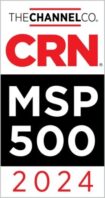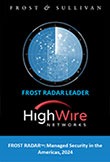By: Charles Hughes, COO, High Wire Networks
This is the first in a series of three blogs on CompTIA’, that will cover the basic fundamentals of leveraging a more agile workforce to reduce service delivery costs without sacrificing the customer experience.
“Success today requires the agility and drive to constantly rethink, reinvigorate, react and reinvent.” – Bill Gates
Agility typically conjures images of athletes and feats of physical exertion, explosive acceleration, deceleration, re-acceleration, change of direction and seemingly random motion. An agile athlete controls their center of mass, demonstrates great balance and technique. Agility is just as important in business, and not just in software development.
Agility in business allows us to adapt, adjust and respond in the face of an ever-changing environment. Today, successful technology companies use agility to take advantage of the opportunities presented by change to reduce cost without sacrificing the customer experience.
What Is an Agile Workforce?
Agile organizational constructs are flat. Instead of layer upon layer of authority, command and control, an agile organization is built around nodal cellular networks with a great deal of autonomy and decision-making authority. Team compositions will vary from project to project and the ability quickly stand up effective teams can open new markets and products or innovate rapidly in existing markets and product lines.
Traditional, highly structured organizations tend to be rigid while an agile organization is capable of changing based on the needs of a project or customer. It’s important to have an overall vision, mission and purpose for the company, but also understand the appropriate time and manner to deviate. Some might consider this chaotic but like the soccer player who changes direction multiple times in a matter of seconds it is based in discipline and practice. This kind of flexibility creates structural strength or what I like to call dynamic stability. Think of the skyline of the largest city you have visited. No doubt there were numerous skyscrapers in your view. They pierce the sky like huge monoliths paying tribute to our modern civilization—strong, structured and rigid. However, they’re also designed to sway in heavy winds. They have flexibility and adapt to the surrounding environment. If they did not, they would surely fall. Organizations must be constructed with the same dynamic stability in mind to endure.
The agile workforce focuses on outcomes more than tasks. Services are not the same as an industrial assembly line that produces thousands of exact same products in the exact same manner. Services can be delivered to the same specifications each time, which generally for the customer means high quality, quick delivery and high value for the cost. We focus on that outcome as absolute but understand the delivery model may be different for each customer and for different projects with the same customer.
Workforce Composition, Communication Are Key
An agile workforce leverages cutting edge technology to perform work, collaborate and ensure effective communication. Today’s workforce was brought up on technology and most millennials and Gen Z don’t remember a time without the internet, smart phones and real time access to information. They thrive on it and know how to leverage it for positive business outcomes. Millennials and Gen Z are comprising an ever-growing percentage of our workforce so you must be millennial and Gen Z friendly.
One key aspect of agile workforces that many people overlook is the composition. An agile workforce isn’t all W-2 employees, or 100% outsourced or 100% 1099 workers. An effective agile workforce mixes all these labor sources into one homogeneous labor pool that is ready to serve and excel. This can be an organic effort or an effective partnership with other companies to fill pieces of the puzzle. This can be a difficult endeavor to manage without the proper systems support and integration. Legislation compounds some of the issues around how you assign work and manage these labor pools, but the proper partnerships internally and externally help manage and mitigate issues that may arise.
It Starts with the Right Leadership
The final characteristic of an agile workforce is the leadership. The concept isn’t new; however, many people still have a hard time articulating it and even harder time executing it. Leadership in an agile organization must understand they are there to serve. We serve the shareholders and leadership of the company. We serve the customers of the company.
More importantly we serve the team members of the company. Our job as servant leaders is to help our people to succeed. This means we don’t try to get each member of our team to adapt to how we like to lead and do things. To the contrary we must be agile enough to adapt our style to the individuals and groups in our workforce.
There are still standards and processes, but we adjust the way we lead people, particularly in the multi-generational workforce based on the situation and people. Much like the concept of dynamic stability we must learn to have variable consistency. We deliver tailored communication for our teams across the organization and multiple levels delivered through various channels, but everyone walks away with the same message.
This is the start of our exploration of agile workforces. In the next installments, we will discuss why it’s important to be agile and the benefits it creates for companies and customers. We will detail how we create the foundational elements of the agile organization and explore the concept of the leadership helix.
Charles Hughes is the COO at High Wire Networks and a member of CompTIA’s Managed Services Community. Join the community today to get more valuable insight!









Leave a Reply